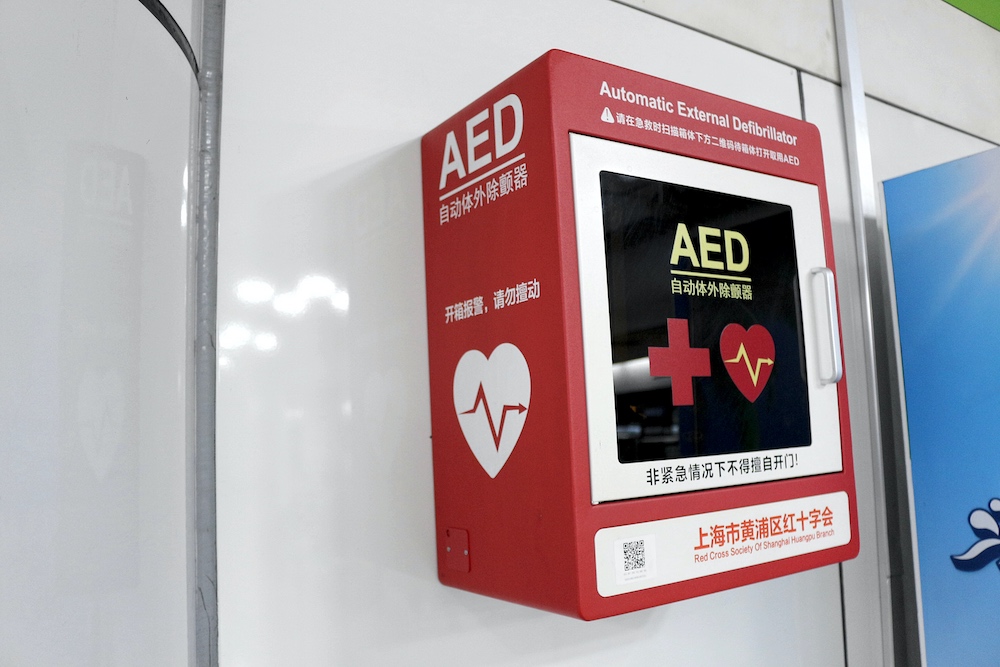Using Task Trainers to Achieve Learning Outcomes in an Interdisciplinary Code Blue Simulation
The simulationist can facilitate the achievement of health career participant learning outcomes through the use of a variety of supplies and equipment. This ranges from simple laboratory supplies and equipment in a skills lab setting to complex high-fidelity human simulators in various healthcare and community settings. Not all healthcare simulation experiences require high fidelity. In some cases, using a combination of low-fidelity task trainers can best accomplish the desired learning outcomes. This HealthySimulation.com article will explore the successful implementation of an interdisciplinary Code Blue simulation in the acute care hospital setting using a combination of low-fidelity clinical simulation equipment.
Supplies and Equipment
Implementing a Code Blue medical simulation requires a fair amount of equipment and supplies. At a minimum, some of the supplies needed include a bag valve mask device, a real or simulated oxygen source, intubation supplies – including a laryngoscope – and plenty of manikin-safe lubricants. Most importantly a simulator, manikin, or task trainer that allows for intubation, accepts chest compressions, and gives feedback is necessary. Some sort of AED or defibrillator ( a method to display a cardiac rhythm) and simulated code medications are also necessary. Lastly, depending on the learning outcomes and availability, a code cart stocked with suction equipment, intravenous fluids, and other supplies normally kept therein is needed.
Sponsored Content:
The interdisciplinary Code Blue healthcare simulation specifically referenced in this article includes RN student nurses and PA students from two different colleges. This partnership has existed for several years and has been modified over time based on lessons learned. The learning objectives centered around the timeliness from discovery of the pulseless simulated patient to initiation of CPR, including time to shock, the effectiveness of compressions and ventilations with minimal time off the chest, successful establishment of an advanced airway, implementation of the appropriate ACLS algorithm, and effective teamwork and communication. Three scenarios were run for each team of participants. These scenarios include V-fib to Sinus Tach, Pulseless V-tach to bradycardia, and Asystole to PEA.
Using a High-Fidelity Patient Simulator
Initially, a high-fidelity Gaumard simulator was used for all three healthcare simulation scenarios in the acute care hospital room setting. The simulator was chosen based on the device’s ability to produce EKG rhythms on a bedside monitor, give CPR feedback (on the controller pc only), and accept live energy from the defibrillator. The simulator was also chosen for its ability to allow IV medication administration and to be intubated.
After running the sessions in the first year, the team found a few issues. The first issue was the ability to accept live energy from the defibrillator, as the defibrillator required an internal bypass wire that had to be set up before the start. Secondly, the defibrillator pads needed to carefully adhere to the predesignated sites that were clearly marked on the chest by the manufacturer’s large gold patches. Due to the tendency for participants to apply the defibrillator patches in a hurry, the team became concerned that the simulator may be damaged when defibrillated and had heard of such incidents at a local college.
Sponsored Content:
Subsequently, the team started using a different Gaumard simulator that allowed for the use of a wired adapter from the defibrillator to snaps located near the appropriate place on the anterolateral chest. This eliminated the potential for inadvertent electrocution of our simulator but sacrificed some realism since the actual defibrillator pads could not be used.
Wear and Tear
After running simulations on this manikin for approximately 24 scenarios, the team noted that some of the wires in the chest skin, to the speakers and the EKG lead sites, had become frayed and disconnected necessitating chest skin replacement. When reviewing videos of the sessions, the team noted that hand placement varied slightly between students as did the quality of compressions and consistency of release position.
There was feedback provided on the instructor’s PC but that was on a stationary device in a nearby control room. This meant that giving real-time feedback to students other than observation by faculty at the bedside was not possible. The CPR feedback built into the defibrillator did not work because the technology was not made to function with a simulator. After the costly chest skin replacement, the team was hesitant to use a high-fidelity simulator for compressions and defibrillation.
Intubation
The PA students in the scenario were not only responsible for running the code as team leader but also for establishing an advanced airway. The same high-fidelity simulator described above accepts an endotracheal tube, provides feedback on the same controller PC program, allows for right and left main stem intubation with respective chest rise, and has airway landmarks such as vocal cords. Again, the PC that displayed this feedback was not located in the room with the participants.
The intubation experience was new for the PA students so many of them needed to pause the scenario to accomplish the task or have the faculty jump in and complete the skill. They wanted to practice during debriefing and the additional practice in improving performance became clear. While grateful to have a simulator able to accept this intervention, excessive wear and tear on the simulator’s airway was a huge concern.
IV Medications and Fluids
The ability to accept intravenous fluids and simulated IV push medications was another advantage of using the simulator. RN students being able to administer medications as realistically as possible during the scenario was important. The coordination of team members at the bedside is a critical aspect of care and trying to access an IV site during compressions and ventilations reproduces a realistic barrier.
Impetus for Change
In the years to follow, the simulator normally used became irreparable. This became the impetus to develop a creative solution that would still meet the learning objectives while providing increased durability and reducing cost.
The Laerdal Nursing Anne QCPR manikin has excellent feedback for compressions and bag-valve-mask ventilation. Participants continuously verbalize satisfaction with the feedback device and consistently show improved performance while using this device. This manikin does not have an airway capable of intubation nor does the manikin have IV access. The manikin can show chest rise when ventilated using a bag-valve mask.
The Laerdal Airway Management Trainer was already being used by the EMT program at the college and was a natural solution to allow PA students to practice intubations. This trainer is far more durable and cost-effective than a simulator as well.
Combining the Use of Two Task Trainers
As faculty examined the learning objectives, the fact that teamwork and the principles of effective resuscitation were the highest priority became clear. Using two different low-fidelity options for students to perform Code Blue simulations was the best option, but the challenge became figuring out a way to combine them. The coordination of tasks during the code created natural opportunities for teamwork, which is why combining the two pieces of equipment mentioned seemed essential.
The Solution
The solution was to have the initial discovery and start of CPR occur with the QCPR manikin in an acute care hospital bed which was the same setting as before. The feedback device was already connected and was visible to the participants. As more team members arrived, the visibility of the feedback device facilitated discussions about the effectiveness of compressions and ventilations and members noted when effectiveness was waning and spoke up far more than when we did not have the device.
When the time to intubate the patient, the bed was wide enough to allow for the QCPR manikin to be slid over slightly and the Airway Management Trainer to be placed next to the trainer in the same bed. The benefit was that students readily coordinated compressions with the intubation as the bed movement interfered with the intubation in the same way as if they were working on one body.
The crowding at the bedside remained realistic as well. Participants switched easily from ventilating the QCPR manikin to ventilating the intubation trainer and because the lungs are visible, participants had instant feedback on the accuracy of the intubation. Because of the manikin’s durability, students are welcome to practice intubations until proficient, after each scenario.
As far as intravenous medication administration, an external IV access with a drain was set up on the QCPR manikin arm and because the drain tubing was carefully hidden by skin-colored adhesive, students were never distracted. Additionally, the cleanup of this type of set is simple and easy, and the reliability is almost 100% because the whole line is always accessible to the simulationist for troubleshooting purposes if needed.
The ShockLink System by Laerdal was used to create cardiac rhythms that showed on the defibrillator and allowed participants to defibrillate using life-like defibrillator pads (placed by participants) directly on the QCPR manikin. Realism improved over what was used previously because the system uses lifelike pads and connects to the working defibrillator.
Outcomes
Since using this low-fidelity combination of task trainers, consistent outcomes have been achieved in time to shock and effectiveness of resuscitation. Participants and faculty continue to see this as a valuable opportunity to learn and practice principles of effective teamwork and communication within an interdisciplinary team. Wear and tear on equipment has been reduced as has the expense to repair and replace. The setup and tear-down time is streamlined and minimized while the ability to implement for larger numbers of students continues to grow. This year the program will serve approximately 100 interdisciplinary students over the span of two days and require two simulationists and four task trainers to implement.
Learn More About High-Fidelity Simulation
Michelle Sherlin, RN, BSN, CHSE, is the full-time coordinator of the 18-bed simulation lab at the Holyoke Community College Center for Health Education and Simulation. She has patient simulation experience dating back to 2002 when she started healthcare simulation at a vocational school and progressed to implementing simulation activities for several area schools and health care facilities. Her background includes curriculum development at the high school and college levels. Sherlin has hosted patient simulation-related conferences and presented on a multitude of topics. She stays current in nursing practice by working as a staff nurse in the Emergency Department. Sherlin is a per diem educator for the same facility where she conducts patient simulation and teaches Advanced Cardiac Life Support. She also works for a community partnership at another local hospital. In that position, she implements a variety of programs to introduce students to various health care professions. She recently won the “Excellence in Clinical Simulation” award from Education Management Solutions.
Sponsored Content:



















